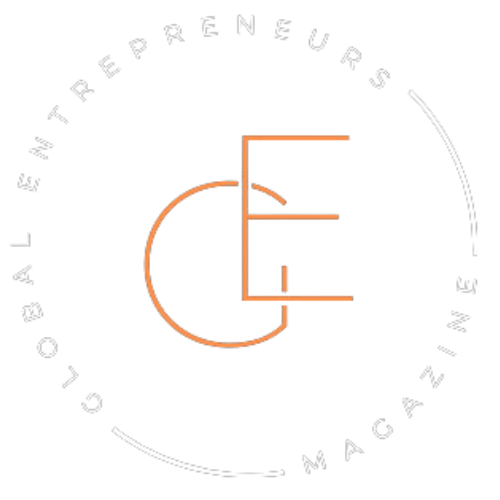The conference room was packed. A dozen voices bounced off the walls, rapid-fire ideas filling the air. At the center of it all, a woman sat with her hands folded, waiting for the right moment to speak. When she finally did, the room went quiet. Her idea wasn’t just good—it was game-changing. But before she could finish, a colleague, a man, cut in and repeated her words almost verbatim. This time, the room responded with nods of approval.
She could have let it go. Could have smiled, let her idea take shape under someone else’s name. Instead, she did something different—she spoke up. “That’s exactly what I was saying,” she said, locking eyes with the room. The shift was almost imperceptible, but it was there. A moment of recognition.
Women in tech have been rewriting the rules for decades, even when the industry wasn’t ready to listen. From the quiet brilliance of Ada Lovelace to the groundbreaking work of women leading AI, cybersecurity, and software development today, the battle hasn’t been just about getting a seat at the table. It’s been about proving—again and again—that they belong there.
But belonging shouldn’t require a fight.
The tech industry moves fast, yet some things change at a crawl. Women still make up a fraction of leadership roles. They’re still paid less, promoted less, questioned more. And yet, they build. They innovate. They lead.
This isn’t another piece about why women should be in tech. That’s already been settled. This is about the ones who refused to wait for permission—the ones who kicked down the doors, reshaped the industry, and made space for the next generation to walk through.
Let’s talk about them.
The Unwritten Rules: Why Tech Still Feels Like a Boys’ Club
Walk into the average tech office, and you’ll see the signs. The all-male leadership team framed on the wall. The startup “culture” that revolves around late-night coding sessions and beer-on-tap perks—designed for a workforce that isn’t juggling family responsibilities. The casual use of terms like “brogrammer,” as if they’re just part of the joke.
It’s not that women aren’t welcome in tech. It’s that, too often, they’re expected to adapt to a system that wasn’t built with them in mind.
Who Gets to Build the Future?
Tech wasn’t always this way. Some of the earliest pioneers in computing were women—Ada Lovelace, who wrote the first algorithm, and the women of ENIAC, who programmed one of the first general-purpose computers. But as the industry grew, so did the barriers.
By the 1980s, a cultural shift had taken place. Personal computers were marketed as toys for boys. Programming, once considered “women’s work,” became a high-status career, and hiring patterns followed suit. Tech companies started shaping their cultures around a narrow archetype—the brilliant but socially detached (and overwhelmingly male) coder.
That’s how the rules were written. And today, even when women break into tech, they’re still expected to play by them.
The Invisible Obstacles
It’s rarely blatant discrimination that keeps women from advancing—it’s the accumulation of small, everyday moments. The assumptions. The interruptions. The meetings where their ideas aren’t taken seriously until a male colleague repeats them. The lack of mentors and sponsors willing to champion their careers.
And then there’s the pipeline problem—or at least, that’s what some say. The idea that there simply aren’t enough qualified women in STEM to fill leadership roles. But that explanation falls apart when you look at the numbers. Women enter tech at promising rates, but they leave in higher numbers than men. Why? Because climbing the ladder in an industry that wasn’t built for you can feel like scaling a wall with no footholds.
This isn’t about talent. It’s about access. It’s about who gets the benefit of the doubt, who gets promoted, and who gets pushed out before they even have a chance to lead.
But the good news? The old rules aren’t as unshakable as they seem. Women in tech are rewriting them in real-time.
Women Who Rewrote the Playbook
In the 1960s, a woman named Margaret Hamilton sat in a room filled with stacks of handwritten code—code that would land astronauts on the moon. As the lead software engineer for NASA’s Apollo program, she wasn’t just writing instructions for computers; she was defining what software engineering would become. But back then, no one called it that.
Grace Hopper, the woman who coined the term “debugging,” had to convince an industry that computers should use readable programming languages rather than machine code. She built COBOL, a language still in use today. Yet, in her early days, she had to fight to prove that software was just as important as hardware.
These women weren’t just good at their jobs. They changed the entire industry.
The Women Leading Tech Today
The landscape has shifted, but the playbook still needs rewriting. Women like Reshma Saujani (founder of Girls Who Code) and Kimberly Bryant (founder of Black Girls Code) are making sure the next generation doesn’t have to fight as hard for a seat at the table. Meanwhile, leaders like Fei-Fei Li, who helped pioneer artificial intelligence research, and Gwynne Shotwell, the president of SpaceX, are proving that women aren’t just part of tech’s future—they are the future.
They’ve challenged hiring biases. They’ve built pipelines for young girls in STEM. They’ve led billion-dollar companies and redefined what leadership looks like in tech. And yet, for every woman whose name makes headlines, there are thousands more pushing boundaries in smaller, quieter ways—changing company cultures, mentoring the next wave of engineers, proving that leadership doesn’t have to look a certain way.
The industry didn’t hand them power. They took it.
The Double Standard: What Women in Tech Still Face Today

A junior developer joins a new team. She has the degrees, the skills, and the drive. But in meetings, she notices something. When she speaks, there’s a pause—as if her words need an extra moment of validation. Her male colleagues jump in freely, tossing out half-baked ideas without hesitation. She double-checks her work before she speaks, careful not to be wrong. When a project succeeds, the credit feels shared. When it stumbles, she feels the weight of it alone.
This is what many women in tech recognize as the unspoken rules of the game.
Imposter Syndrome—or Just the Reality of Tech?
People often say women struggle with imposter syndrome, that they doubt their abilities even when they’re more than qualified. But how much of that “syndrome” is self-inflicted, and how much is a response to an industry that routinely questions them?
Men are often judged on their potential—hired and promoted based on what they could achieve. Women, on the other hand, are judged on proof. They have to show they can do the job before they’re given the chance to do it. This explains why men apply for jobs when they meet 60% of the qualifications, while women wait until they check every single box.
And when women do step into leadership roles, they’re expected to walk a tightrope. Too assertive? She’s difficult. Too reserved? She’s not leadership material.
The Pressure to Be Perfect
In a field where risk-taking and innovation are celebrated, women often feel they can’t afford to fail. Tech’s “move fast and break things” mentality works great—until a woman makes a mistake.
A male CEO who takes bold risks is seen as a visionary. A female CEO who does the same? A liability.
This double standard isn’t just frustrating—it’s exhausting. And it’s one of the reasons why women leave tech at higher rates than men. It’s not the work that drives them out; it’s the culture of constantly having to prove, defend, and justify their place.
But some aren’t leaving. They’re staying, they’re leading, and they’re making sure the industry changes for good.
Breaking Barriers in Real Time: Women Changing Tech Today
A few years ago, when Whitney Wolfe Herd launched Bumble, she wasn’t just starting another dating app. She was flipping an entire industry on its head. Women made the first move, and for once, the rules weren’t written to benefit men. Investors doubted her. The tech world watched with skepticism. And then, in 2021, she became the youngest woman to take a company public.
That’s what change looks like in real time.
The Women Reshaping the Industry
Across the board, women in tech aren’t just joining companies—they’re building them.
- Arlan Hamilton founded Backstage Capital to fund startups led by women, people of color, and LGBTQ+ entrepreneurs—groups often shut out of traditional venture funding.
- Reshma Saujani started Girls Who Code to close the gender gap in tech, making sure young girls saw programming as a career path, not just an elective.
- Anne Wojcicki co-founded 23andMe, bringing personal DNA testing to consumers while navigating an industry dominated by men.
These women didn’t wait for permission. They saw the gaps, the biases, the lack of representation—and instead of working around them, they built something better.
More Than Just a Seat at the Table
It’s one thing to break into an industry. It’s another to reshape it from the inside.
Women-led tech companies are outpacing others in growth and innovation. Studies show that diverse teams perform better, yet many companies still struggle to hire and promote women. The change isn’t happening because the system is suddenly fairer—it’s happening because women are making space for each other.
Mentorship and sponsorship are playing a bigger role than ever. Women in leadership are reaching back, bringing others up with them. They’re investing in women-led startups, challenging biased hiring practices, and proving that inclusion isn’t just about numbers—it’s about impact.
The industry is shifting, but not because it chose to. It’s changing because women in tech refused to wait for it to happen.
The Path Forward: What Needs to Change?
Tech companies love to talk about diversity. They roll out hiring initiatives, release reports, and set goals. But the real question isn’t how many women they hire—it’s how many they keep.
Because the problem has never been a lack of talent. Women enter the tech workforce with the same degrees, the same skills, the same ambition. But somewhere along the way, too many of them leave.
Fixing the Culture, Not the Women
For years, the conversation has focused on how to help women adapt—how to boost their confidence, how to train them to negotiate, how to teach them to “lean in.” But women in tech don’t need fixing. The industry does.
- Promotion and Pay Gaps – Women still earn less than men in tech, and leadership roles remain male-dominated. Companies need to go beyond talking points and commit to equal pay, transparent promotion processes, and leadership pipelines that don’t stall out for women at mid-career.
- Workplace Biases – Hiring managers still evaluate women differently, often assuming they’re less technical or more suited for “soft” roles. Performance reviews reflect these biases, with women more likely to receive vague feedback while men get specific advice on how to advance.
- Company Culture – Many tech workplaces still operate on outdated assumptions—long hours, aggressive competition, and a one-size-fits-all approach that sidelines parents, caregivers, and anyone who doesn’t fit the traditional mold of a “hustle culture” worker.
Building a Better Pipeline
It’s not enough to recruit women into tech—they need to see a future where they can thrive. That starts early.
- Education & Representation – When young girls don’t see women in tech, they don’t picture themselves there. Encouraging STEM education, funding coding programs, and increasing visibility for women in leadership are key.
- Mentorship & Sponsorship – Women don’t just need advice—they need opportunities. A mentor gives guidance. A sponsor opens doors. Tech companies need more of the latter.
- Men as Allies – Real change doesn’t happen without those in power making space. That means calling out bias when it happens, advocating for fair hiring and promotion practices, and challenging the norms that keep women on the sidelines.
Women in tech have already proven they belong. The industry’s next challenge? Making sure they don’t have to keep proving it.
This Is Only the Beginning
Somewhere right now, a girl is sitting in a classroom, tinkering with her first line of code. Maybe she’s the only one in the room who looks like her. Maybe she’s already heard the whispers—Are you sure tech is for you? Maybe she’ll hear them a hundred more times before she ever walks into her first job.
But maybe she’s also watching what’s happening in the world. She sees women running billion-dollar tech companies. She sees them leading AI research, launching startups, and sitting at the tables where decisions are made. She sees them speaking up, taking credit, and pushing back against the rules that were never meant for them.
And because of that, she keeps going.
The barriers in tech aren’t gone. The biases haven’t magically disappeared. But they’re weaker than they were yesterday. And tomorrow, they’ll be weaker still. Because women in tech aren’t waiting for change—they’re driving it.
The industry isn’t changing because it wants to. It’s changing because women refused to let it stay the same.
And that’s how every real transformation begins.




